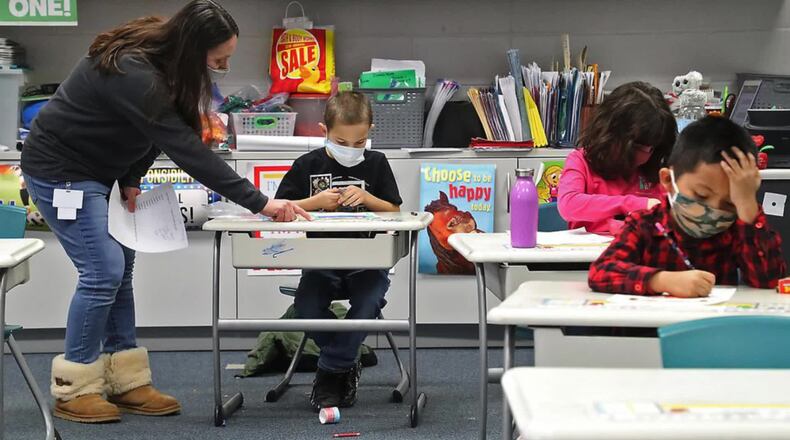Individual schools’ and districts’ report cards also were released Thursday, although they do not include letter grades as they have in some years.
The Springfield City School District, which reported an enrollment of 7,037, had a performance index of 43.9, down from the previous index of 54.3.
Springfield City Schools Superintendent Bob Hill said that the state’s standardized testing is “not a measure of (the district’s) worth or effort.”
“On top of all of the worry and concern for the well-being of our students and staff, we then had to worry about state testing,” Hill said. “Schools already utilize internal measures that are timely and provide actionable data to drive and adjust instruction to meet student learning goals. State prescribed tests are redundant and provide unnecessary stress on students and teachers, especially in the middle of a global pandemic.”
The highest performance index in Clark County belongs to Southeastern Local Schools at 69.9, also down from the previous 75.6.
“While the available data from this year’s report card does not sufficiently tell the whole story, it does reveal the unfortunate reality that pandemic-related disruptions had the biggest impact on the state’s most vulnerable students,” said interim state superintendent Stephanie Siddens.
The percentage of all students statewide who tested proficient or better on state exams declined 7.6% in English (from 64.6 to 57.0), and declined 12.8% in math (from 61.0% to 48.2%) when compared to spring 2019 tests. Spring 2020 tests were canceled.
But economically disadvantaged students and Black students saw larger proficiency declines — 10% in English and 15% in math, compared to spring 2019.
High school graduation rates, which are reported on a one-year lag, showed a positive note statewide. The Class of 2020 — seniors who had their final months moved online due to the start of the COVID pandemic — had a four-year graduation rate of 87.2%, up from 85.9% the year before.
Springfield City Schools has a four-year graduation rate of 84%, significantly up from the previous 76.7%. Southeastern Local reported a four-year gradation rate of 98.2%, the highest in the county.
The state legislature gave schools some flexibility in deciding how those seniors could meet graduation requirements, as their final course credits and state test opportunities were affected by COVID shutdowns. The five-year graduation rate (showing what percentage of the traditional class of 2019 earned a diploma within five years) also rose, from 87.5% to 88.3%.
Chronic absenteeism statistics were bad, as expected in a 2020-21 year when many schools bounced back and forth between online and in-person models, and students dealt with COVID cases and quarantines, and lack of normal routines.
Statewide, 24% of students were chronically absent in 2020-21, up from 16.7% in 2018-19, according to ODE. A student who misses 10% or more of the school year — roughly equivalent to two days a month — is considered chronically absent.
Springfield schools reported a 57.7% chronic absenteeism rate, the highest of the county’s school districts. Greenon Local reported the lowest rate in the county: 9%.
Among districts that primarily did remote learning during the 2020-21, chronic absenteeism increased by an average of 9 percentage points, according to ODE. Among districts that were primarily in-person, chronic absenteeism increased an average of 5 percentage points. The rate rose only 4 percentage points among districts that primarily used hybrid models.


